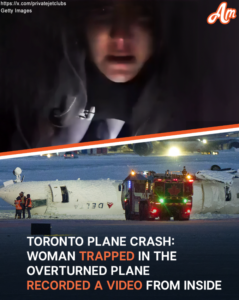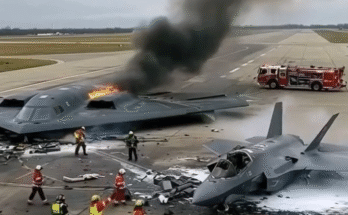On February 17, 2025, Delta Connection Flight 4819, operated by Endeavor Air, experienced a catastrophic incident upon landing at Toronto Pearson International Airport. The Bombardier CRJ900LR, carrying 76 passengers and four crew members, overturned on the runway during its final approach. Remarkably, all 80 individuals on board survived, though 18 sustained injuries, with three reported in critical condition.
Incident Overview
Departing from Minneapolis–Saint Paul International Airport at 11:47 a.m., Flight 4819 was scheduled to arrive in Toronto in the early afternoon. At approximately 2:15 p.m., during the landing sequence, the aircraft encountered difficulties that led to it flipping upside down on the runway. Eyewitness accounts and video footage captured the harrowing moments as the plane skidded to a halt, inverted, and subsequently caught fire. Passengers were seen evacuating the aircraft, some crawling along the ceiling to escape the smoke and flames.
Passenger Experience
In the chaotic aftermath, one passenger, identified as Emily Rodriguez, managed to record a brief video while trapped upside down in her seat. The footage, later shared on social media, provides a visceral glimpse into the immediate confusion and fear inside the cabin. Muffled cries, alarms, and the ominous smell of smoke pervade the recording. Rodriguez’s video has since become a focal point for discussions about passenger safety and emergency response during aviation accidents.
Emergency Response
Emergency services at Toronto Pearson International Airport responded swiftly to the incident. Fire Chief Todd Aitken confirmed that all passengers and crew were evacuated safely, with 18 individuals transported to local hospitals for treatment. The rapid response of the firefighting teams was instrumental in preventing a more tragic outcome, especially given the aircraft’s compromised position and the ensuing fire.
Weather Conditions and Potential Causes
Initial reports suggested that adverse weather conditions, including snow and wind, might have played a role in the accident. However, subsequent data indicated that at the time of the crash, the runway was dry, and there were no significant crosswinds. The exact cause of the aircraft’s overturn remains under investigation. Both the Transportation Safety Board of Canada and the U.S. National Transportation Safety Board have launched inquiries to determine the factors contributing to the incident.
Operational Impact
The crash led to the temporary closure of all runways at Toronto Pearson International Airport, resulting in numerous flight cancellations and diversions. Operations resumed later in the evening, but the incident caused significant disruptions to air traffic in the region. Passengers on diverted flights were accommodated at nearby airports, including Montréal-Trudeau International Airport and Ottawa Macdonald-Cartier International Airport.
Aircraft Details
The aircraft involved was a 16-year-old Bombardier CRJ900LR, tail number N932XJ. This model is commonly used for regional flights and is known for its reliability. The plane had undergone regular maintenance checks, and there were no prior reports of mechanical issues. Investigators will examine the aircraft’s maintenance history, flight data recorders, and cockpit voice recorders to piece together the sequence of events leading up to the crash.
Looking Forward
While the survival of all passengers and crew is a testament to the effectiveness of modern aviation safety measures, this incident underscores the importance of continuous evaluation and improvement of safety protocols. The forthcoming investigation reports are expected to provide insights that will help prevent similar occurrences in the future.


